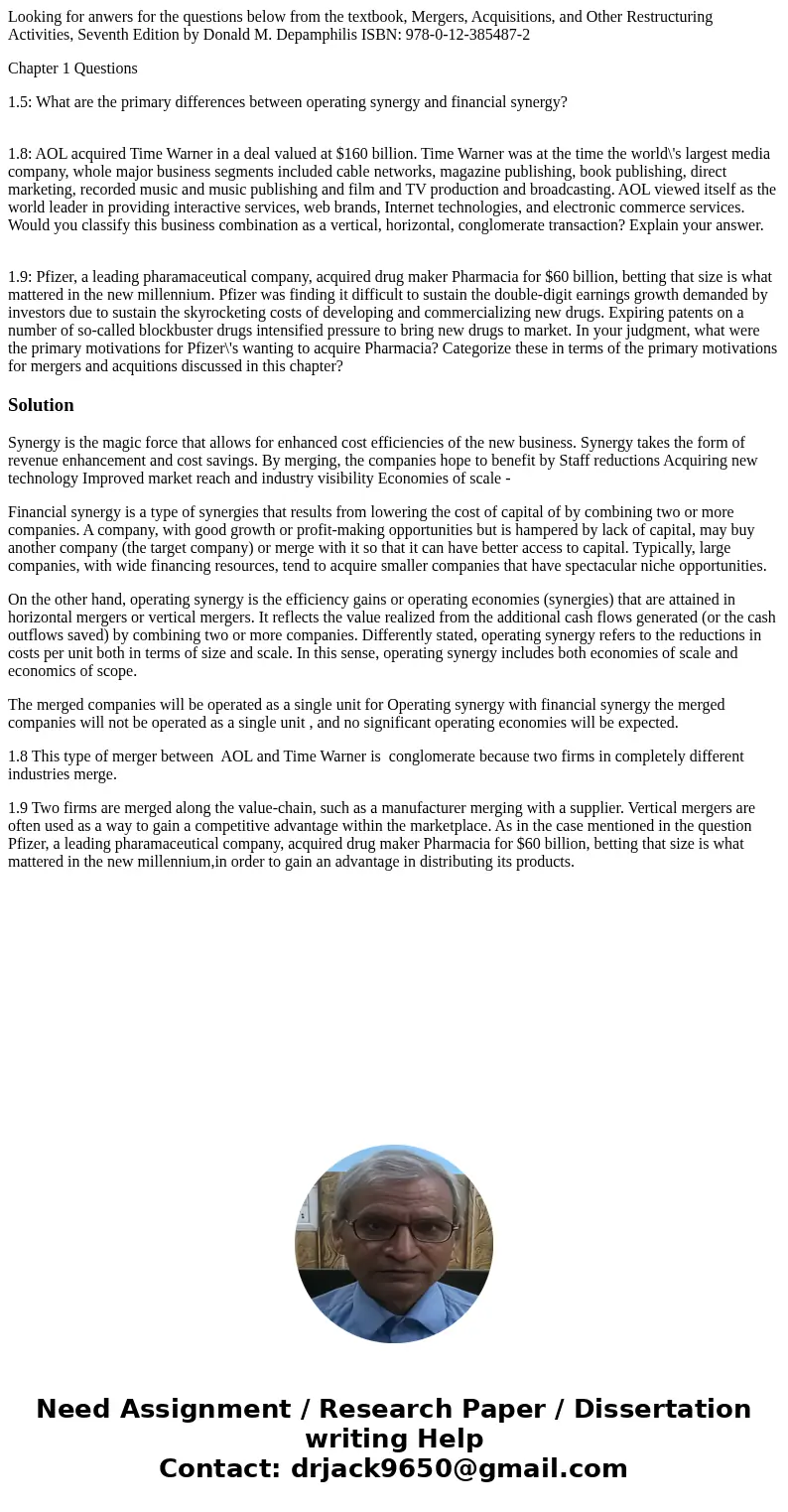Looking for anwers for the questions below from the textbook
Looking for anwers for the questions below from the textbook, Mergers, Acquisitions, and Other Restructuring Activities, Seventh Edition by Donald M. Depamphilis ISBN: 978-0-12-385487-2
Chapter 1 Questions
1.5: What are the primary differences between operating synergy and financial synergy?
1.8: AOL acquired Time Warner in a deal valued at $160 billion. Time Warner was at the time the world\'s largest media company, whole major business segments included cable networks, magazine publishing, book publishing, direct marketing, recorded music and music publishing and film and TV production and broadcasting. AOL viewed itself as the world leader in providing interactive services, web brands, Internet technologies, and electronic commerce services. Would you classify this business combination as a vertical, horizontal, conglomerate transaction? Explain your answer.
1.9: Pfizer, a leading pharamaceutical company, acquired drug maker Pharmacia for $60 billion, betting that size is what mattered in the new millennium. Pfizer was finding it difficult to sustain the double-digit earnings growth demanded by investors due to sustain the skyrocketing costs of developing and commercializing new drugs. Expiring patents on a number of so-called blockbuster drugs intensified pressure to bring new drugs to market. In your judgment, what were the primary motivations for Pfizer\'s wanting to acquire Pharmacia? Categorize these in terms of the primary motivations for mergers and acquitions discussed in this chapter?
Solution
Synergy is the magic force that allows for enhanced cost efficiencies of the new business. Synergy takes the form of revenue enhancement and cost savings. By merging, the companies hope to benefit by Staff reductions Acquiring new technology Improved market reach and industry visibility Economies of scale -
Financial synergy is a type of synergies that results from lowering the cost of capital of by combining two or more companies. A company, with good growth or profit-making opportunities but is hampered by lack of capital, may buy another company (the target company) or merge with it so that it can have better access to capital. Typically, large companies, with wide financing resources, tend to acquire smaller companies that have spectacular niche opportunities.
On the other hand, operating synergy is the efficiency gains or operating economies (synergies) that are attained in horizontal mergers or vertical mergers. It reflects the value realized from the additional cash flows generated (or the cash outflows saved) by combining two or more companies. Differently stated, operating synergy refers to the reductions in costs per unit both in terms of size and scale. In this sense, operating synergy includes both economies of scale and economics of scope.
The merged companies will be operated as a single unit for Operating synergy with financial synergy the merged companies will not be operated as a single unit , and no significant operating economies will be expected.
1.8 This type of merger between AOL and Time Warner is conglomerate because two firms in completely different industries merge.
1.9 Two firms are merged along the value-chain, such as a manufacturer merging with a supplier. Vertical mergers are often used as a way to gain a competitive advantage within the marketplace. As in the case mentioned in the question Pfizer, a leading pharamaceutical company, acquired drug maker Pharmacia for $60 billion, betting that size is what mattered in the new millennium,in order to gain an advantage in distributing its products.

 Homework Sourse
Homework Sourse